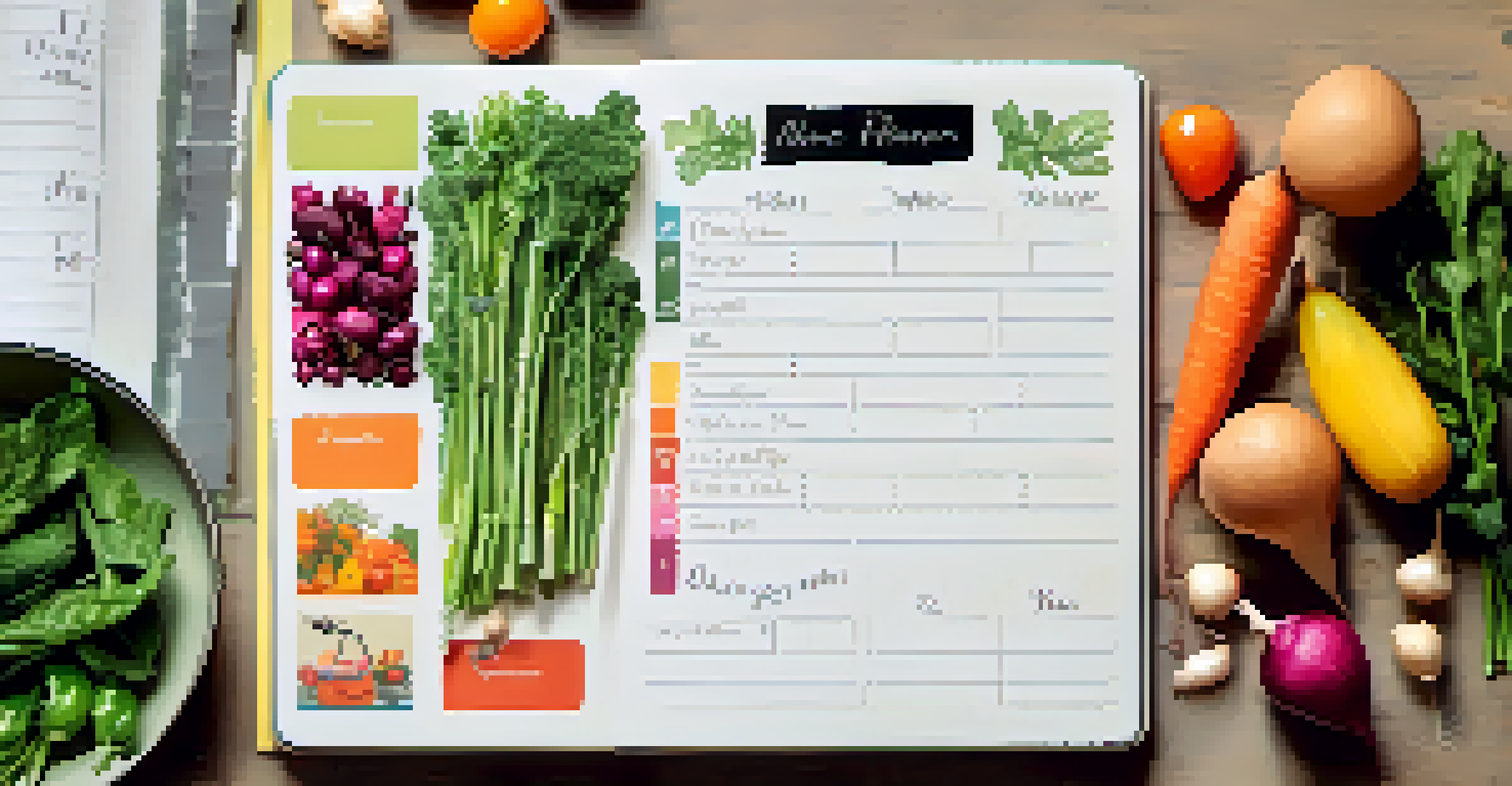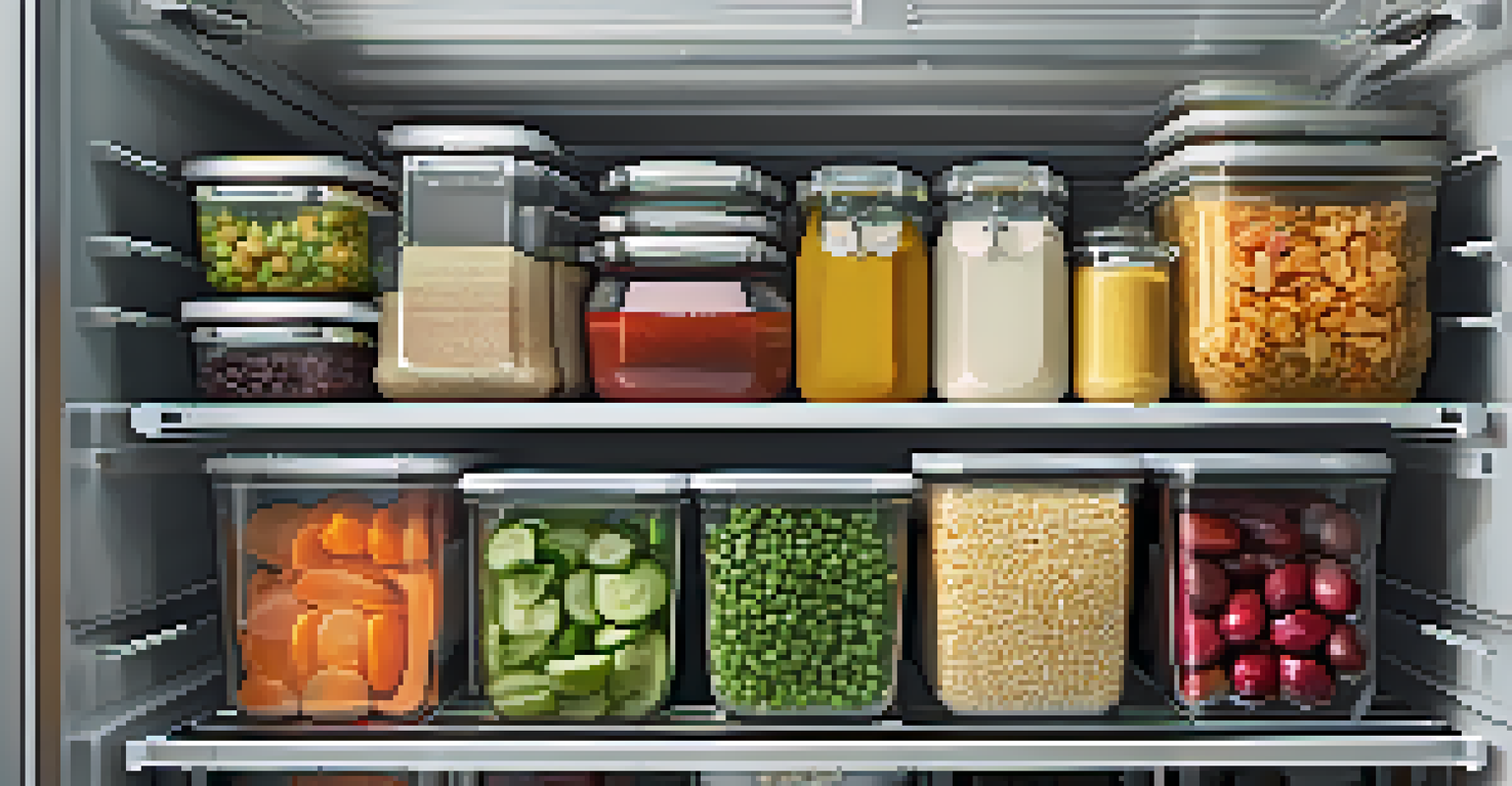Seasonal Vegetarian Meal Prep: A Complete Guide for Beginners

Understanding Seasonal Eating: Why It Matters
Seasonal eating revolves around consuming fruits and vegetables that are in their natural growing cycle. This practice not only boosts flavor but also freshness, making your meals more enjoyable and nutritious. For beginners, understanding the rhythm of seasons can simplify grocery shopping and meal prep.
Eating seasonally is not just about health; it's about connecting with the land and the people who grow our food.
When you eat seasonally, you support local farmers and reduce your carbon footprint by minimizing transportation. Plus, seasonal produce is often less expensive due to its abundance, allowing you to save money while eating healthily. From ripe tomatoes in summer to hearty squash in fall, the taste difference is often remarkable.
Ultimately, embracing seasonal eating can transform your meal prep experience. By aligning your meals with what’s available, you’ll feel more connected to your food and the environment. This awareness can inspire creativity in the kitchen, inviting you to try new recipes and combinations.
Essential Tools for Meal Prep Success
Before diving into meal prep, it’s crucial to have the right tools on hand. A set of sharp knives, cutting boards, and quality storage containers can make the process smoother and more efficient. Investing in these essentials ensures that your time spent in the kitchen is productive and enjoyable.

In addition to basic tools, consider using appliances like a slow cooker or an Instant Pot. These devices not only save time but also allow for hands-off cooking, freeing you up for other tasks. A food processor can also be a game changer, helping you whip up sauces, chop vegetables, or even make dips in no time.
Embrace Seasonal Eating Benefits
Eating seasonally enhances flavor, supports local farmers, and often saves money on produce.
Lastly, don’t overlook the importance of a meal planner or a simple notebook. Jotting down your weekly meals can keep you organized and focused, making it easier to stick to your plan. Having a clear outline of what to prepare can reduce stress and eliminate the dreaded ‘what's for dinner’ question.
Choosing Your Seasonal Ingredients
When selecting ingredients, it’s helpful to know what’s currently in season. You can often find this information online or at your local farmers' market. For example, spring might offer fresh asparagus and peas, while winter could bring hearty root vegetables like carrots and beets.
The food you eat can either be the safest and most powerful form of medicine or the slowest form of poison.
Focusing on seasonal produce not only enhances flavor but also encourages variety in your meals. By rotating different fruits and vegetables throughout the year, you’ll discover new textures and tastes, keeping your palate engaged. Don’t hesitate to experiment with unfamiliar ingredients; you might just find a new favorite!
Another tip is to make use of the entire vegetable. For instance, beet greens are nutritious and can be sautéed or added to salads, while broccoli stems can be peeled and cooked just like the florets. Embracing the whole plant can enhance your meals while reducing waste.
Creating a Weekly Meal Plan: Step by Step
A well-thought-out meal plan serves as the backbone of successful meal prep. Start by selecting a few recipes that utilize seasonal ingredients and fit your dietary preferences. Aim for a mix of meals that can be enjoyed throughout the week, ensuring variety without feeling overwhelmed.
Make a grocery list based on your chosen recipes, and stick to it to avoid impulse buys. Shopping the perimeter of the grocery store is often a good strategy, as this is where the freshest produce, grains, and legumes are typically located. This approach not only keeps your meals healthy but can also save you money.
Essential Tools for Meal Prep
Having the right kitchen tools, like sharp knives and storage containers, can make meal prep more efficient and enjoyable.
Finally, don’t forget to factor in leftovers. Planning to cook larger batches can save time and effort later in the week. Leftovers can often be transformed into entirely new dishes, providing a creative twist and minimizing food waste.
Meal Prep Techniques: Making It Easy
When it comes to meal prep, there are several techniques to help streamline the process. Batch cooking is one of the most effective methods, where you prepare larger quantities of a dish to enjoy over several days. This not only saves time but also makes it easier to stick to your healthy eating goals.
Another helpful technique is to pre-chop vegetables and store them in airtight containers. This small step can significantly cut down on prep time during busy weeknights. You can also cook grains in bulk, like quinoa or brown rice, to use as a base for various meals.
Lastly, consider portioning out your meals into individual containers. This makes grab-and-go lunches a breeze and helps you manage portion sizes. Having pre-portioned meals ready to eat can transform your week, making healthy eating convenient and accessible.
Storing Your Meals: Best Practices
Proper storage is vital for maintaining the freshness and quality of your meal prep. Use airtight containers to keep your food safe from contamination and extend its shelf life. Glass containers are particularly popular as they are durable and microwave-safe, allowing you to reheat meals easily.
Labeling your containers with the date and contents can help you keep track of freshness. This simple step can prevent food waste and remind you what to eat first. Remember, some meals freeze better than others, so it’s essential to know which dishes can be stored long-term.
Creative Meal Planning Tips
Planning meals with leftovers and seasonal ingredients fosters variety and reduces food waste.
Additionally, consider the layout of your fridge and freezer. Place older items at the front and newer ones in the back to ensure that nothing gets forgotten. By organizing your space, you’ll not only make meal prep more efficient but also create a system that encourages you to use what you have.
Enjoying Your Seasonal Vegetarian Meals
The final step in your meal prep journey is diving into your delicious creations! Take the time to savor your meals, appreciating the effort you put into preparing them. Eating mindfully allows you to enjoy the flavors and textures of seasonal ingredients, making every bite satisfying.
Consider sharing your meals with friends or family. Cooking together can be a fun bonding experience, and sharing the bounty of your meal prep creates a sense of community. Plus, it’s a great way to introduce others to the benefits of seasonal vegetarian cooking.

Lastly, don’t shy away from being creative with your meals. Feel free to mix and match components or add new seasonings to elevate your dishes. Cooking is an art, and experimenting with flavors can lead to delightful surprises, making your meal prep journey even more rewarding.